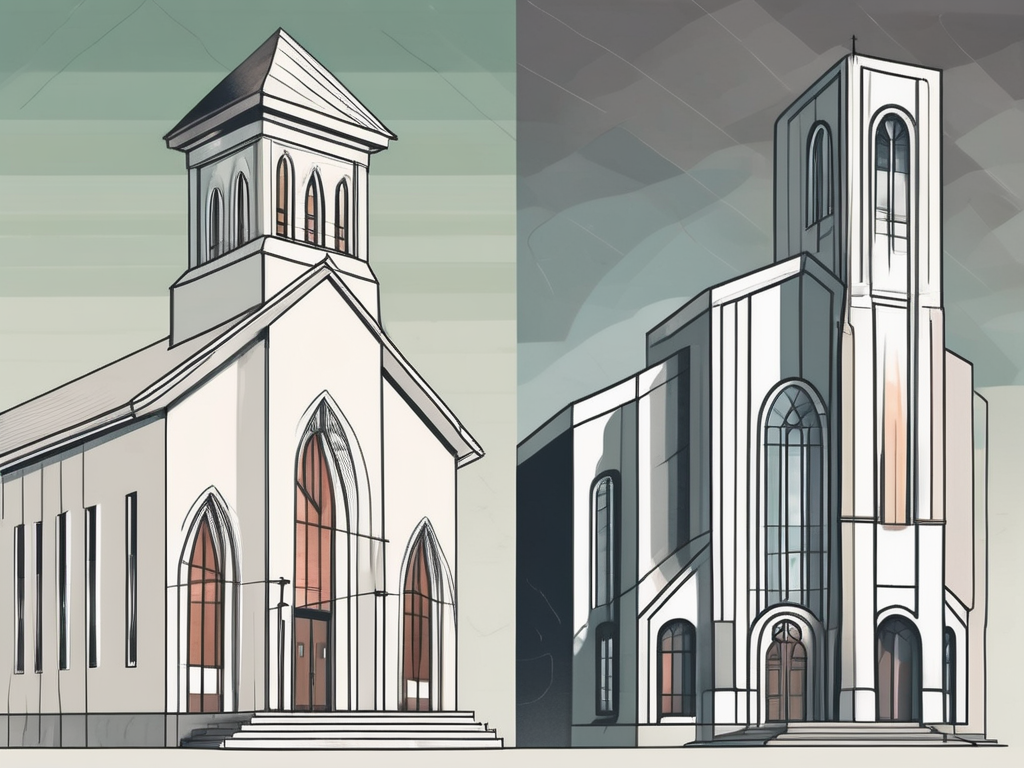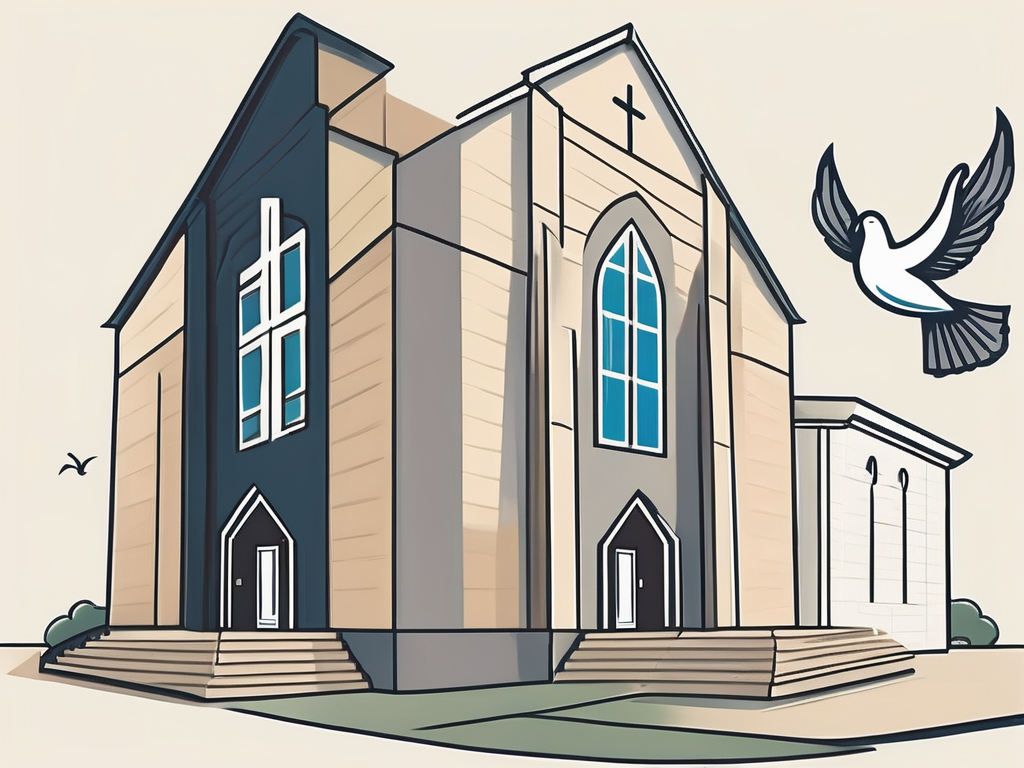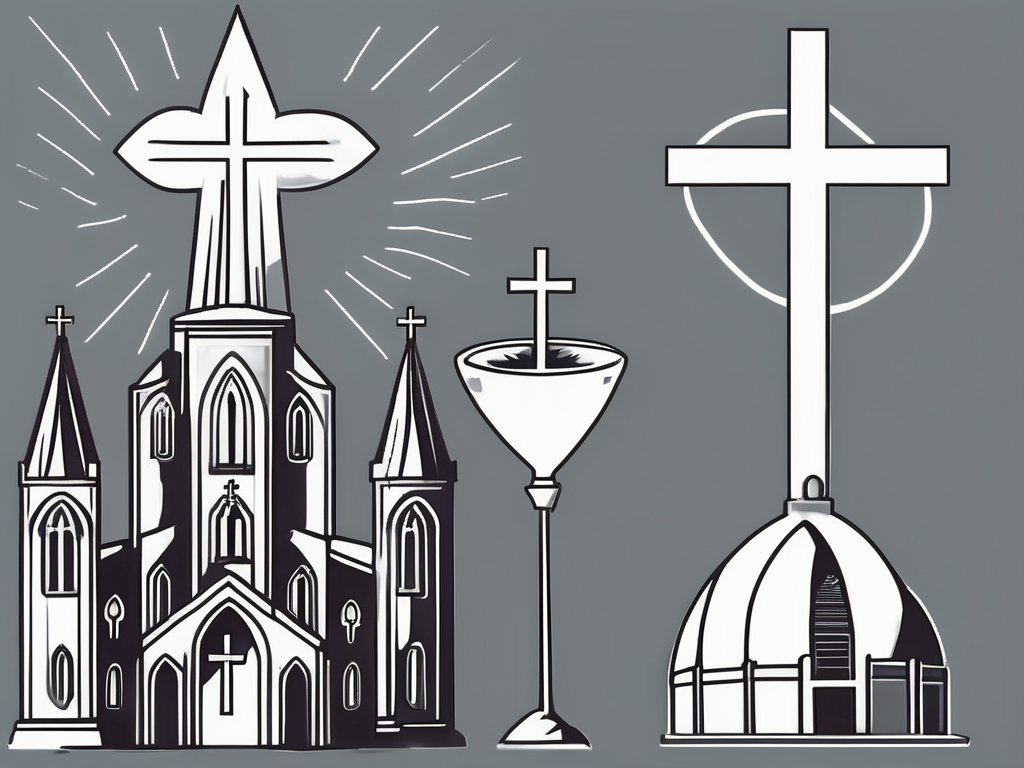In the vast landscape of Christianity, two denominations stand out for their unique beliefs and practices: Seventh Day Adventist and Pentecostal. While there are similarities between them, there are also significant differences that shape the way they worship, interpret the Bible, and live out their faith. In this article, we will take a closer look at these two denominations and explore their origins, key beliefs, worship styles, theological differences, lifestyle and cultural practices, as well as leadership and church structure. So, let’s dive in and discover the fascinating world of Seventh Day Adventist and Pentecostal traditions.
Understanding the Basics: Seventh Day Adventist and Pentecostal
Before we delve into the details, it’s crucial to understand the foundations of these two denominations.
Seventh Day Adventist and Pentecostal are two distinct Christian denominations with their own unique origins, beliefs, and worship styles. Both denominations have made significant contributions to the rich tapestry of Christianity, attracting followers from all walks of life.
Origins and Historical Background
Seventh Day Adventist traces its roots back to the 19th century, with its founder, Ellen G. White, playing a pivotal role in shaping its teachings. Born in 1827, Ellen G. White experienced a series of visions that she believed were messages from God. These visions formed the foundation of Seventh Day Adventist beliefs, emphasizing the importance of the Sabbath, healthful living, and the imminent return of Jesus Christ.
Pentecostalism, on the other hand, emerged in the early 20th century as a movement characterized by a belief in the baptism of the Holy Spirit and the manifestation of spiritual gifts. The Azusa Street Revival, which took place in Los Angeles in 1906, is often seen as a key event in the birth of the Pentecostal movement. During this revival, participants reported experiencing the outpouring of the Holy Spirit, speaking in tongues, and witnessing miraculous healings.
Key Beliefs and Teachings
Seventh Day Adventists emphasize the observance of the Sabbath on the seventh day of the week, dietary restrictions, and the imminent return of Jesus Christ. They believe that the Sabbath is a holy day of rest and worship, providing a time for spiritual reflection and communion with God. Additionally, Seventh Day Adventists adhere to a healthful lifestyle, promoting vegetarianism and abstaining from harmful substances such as tobacco and alcohol.
Pentecostals, on the other hand, place a strong emphasis on the experience of being filled with the Holy Spirit, speaking in tongues, and the transformative power of the Gospel. They believe that the baptism of the Holy Spirit empowers believers to live a victorious Christian life, enabling them to manifest spiritual gifts such as prophecy, healing, and speaking in tongues. Pentecostals view these gifts as essential for the edification of the Church and the spreading of the Gospel.
Worship Styles and Practices
When it comes to worship, Seventh Day Adventists typically follow a more traditional approach, with a focus on hymns, Scripture reading, and preaching. Their worship services often include a structured order of worship, with an emphasis on biblical teachings and the study of scripture. The Sabbath is considered a sacred time for Seventh Day Adventists, and their worship services reflect this reverence and devotion.
Pentecostals, on the other hand, tend to have a more lively and vibrant worship style, characterized by passionate singing, spontaneous prayer, and an expectation for the manifestation of gifts of the Spirit. Their worship services are often marked by a sense of freedom and spontaneity, with believers expressing their love and devotion to God through heartfelt worship and praise. Pentecostals believe that worship should be a dynamic and interactive experience, allowing the Holy Spirit to move and work in the midst of the congregation.
Overall, while Seventh Day Adventist and Pentecostal share a common Christian faith, they have distinct beliefs, practices, and worship styles that have shaped their respective communities. Understanding these differences can foster greater appreciation and respect for the diversity within the Christian faith, as well as provide insight into the rich tapestry of spiritual expression found within these denominations.
Theological Differences: A Closer Look
Now that we have a grasp of the basics, let’s explore the theological distinctions between Seventh Day Adventist and Pentecostal traditions.
Before we delve into the details, it’s important to note that theological differences are not meant to create division or animosity between these two faith traditions. Rather, they provide us with an opportunity to understand and appreciate the diverse ways in which people approach their relationship with God.
Views on Salvation:
Seventh Day Adventists believe in the concept of “investigative judgment” where each person’s life is examined before Christ’s second coming. This belief stems from their understanding of the biblical book of Daniel, particularly the prophecy of the cleansing of the heavenly sanctuary. They believe that during this investigative judgment, God evaluates the lives of individuals to determine their fitness for eternal life.
Furthermore, Seventh Day Adventists emphasize the importance of righteous living and obedience to God’s commandments as part of the process of salvation. They believe that faith in Jesus Christ is essential, but it must be accompanied by a life of holiness and adherence to God’s moral law.
In contrast, Pentecostals place a strong emphasis on the concept of grace. They believe in an instantaneous experience of salvation through faith in Jesus Christ. For Pentecostals, the transformative power of God’s grace is seen as the central aspect of salvation, enabling believers to be born again and live a new life in Christ.
Interpretation of the Bible:
While both denominations hold the Bible in high regard as the inspired Word of God, they differ in their approach to interpreting Scripture.
Seventh Day Adventists rely heavily on the writings of Ellen G. White, whom they consider a prophetess, alongside the Bible. They believe that God has given her special insight and guidance, particularly in understanding the prophetic books of Daniel and Revelation. These writings, known as the “Spirit of Prophecy,” are seen as a valuable resource for interpreting and applying biblical teachings in a contemporary context.
Pentecostals, on the other hand, tend to focus more on the direct understanding of the Bible through the guidance of the Holy Spirit. They believe that the Holy Spirit illuminates the Scriptures, enabling believers to discern God’s will and receive personal revelation. This emphasis on the immediate work of the Spirit in interpreting the Bible is seen as essential for experiencing the fullness of God’s truth and guidance.
Beliefs about the Holy Spirit:
The role of the Holy Spirit is another area where these two denominations diverge.
Seventh Day Adventists see the Holy Spirit as a distinct entity in the Godhead, alongside the Father and Son. They believe that the Holy Spirit is a personal being who works in harmony with the Father and Son to accomplish God’s purposes in the world. While they acknowledge the Holy Spirit’s active presence and work, they may not emphasize the manifestation of spiritual gifts as prominently as Pentecostals.
Pentecostals, however, place a greater emphasis on the Holy Spirit’s active presence and work in the lives of believers. They believe in the baptism of the Holy Spirit, which they see as a separate experience from salvation. This baptism is often accompanied by the manifestation of spiritual gifts such as speaking in tongues, prophecy, healing, and miracles. Pentecostals view these gifts as evidence of the Holy Spirit’s power and presence, empowering believers for ministry and service.
As we explore these theological differences, it’s important to remember that both Seventh Day Adventists and Pentecostals share a common faith in Jesus Christ as Lord and Savior. While their perspectives may vary, their ultimate goal is to live in accordance with God’s will and bring glory to His name.
Lifestyle and Cultural Differences
Beyond their theological distinctions, Seventh Day Adventist and Pentecostal traditions also exhibit variations in lifestyle and cultural practices.
When it comes to dietary restrictions and health practices, Seventh Day Adventists take a strong stance on promoting a plant-based diet. They believe that what they consume has a direct impact on their physical and spiritual well-being. As a result, many Adventists adhere to a vegetarian lifestyle, avoiding meat and other animal products. In addition to their dietary choices, they also emphasize the importance of abstaining from alcohol and tobacco, recognizing the harmful effects they can have on the body. Regular exercise is also encouraged, as Adventists believe in taking care of their bodies as temples of the Holy Spirit.
Pentecostals, while also valuing good health, do not have specific dietary restrictions like their Adventist counterparts. However, they often emphasize the concept of “body as a temple” and encourage their followers to maintain a healthy lifestyle. This includes making conscious choices about what they eat and engaging in physical activities that promote well-being.
Another area where Seventh Day Adventists and Pentecostals differ is in the observance of the Sabbath. For Seventh Day Adventists, the Sabbath is a sacred day of rest and worship that falls on Saturday, the seventh day of the week. They believe that this day is meant to be dedicated to spiritual reflection, spending time with family, and participating in worship services. On the other hand, Pentecostals also value the concept of a dedicated day of rest, but they have more flexibility in terms of which day they observe as the Sabbath. This flexibility allows them to adapt their observance to fit the demands of their individual schedules and cultural contexts.
When it comes to attitudes towards modern society, Seventh Day Adventists have historically taken a cautious approach. They tend to be more reserved when it comes to engaging with worldly pursuits and entertainment. Instead, they prioritize spiritual growth and preparing for the second coming of Jesus. This often means focusing on activities that align with their faith, such as Bible study, community service, and evangelism.
Pentecostals, on the other hand, embrace a more culturally engaged approach. They encourage their believers to be active participants in their communities, seeking to make a positive impact on the world around them. While maintaining a strong commitment to their faith, Pentecostals are often found involved in various social and cultural activities, such as music, arts, and community outreach programs. They believe that their faith should not isolate them from society, but rather empower them to bring about positive change.
Leadership and Church Structure
Lastly, let’s explore the differences in leadership and church structure between Seventh Day Adventists and Pentecostals.
Role of Women in the Church
Seventh Day Adventists have a long-standing tradition of affirming the value and active involvement of women in various ministries of the church, including pastoral roles. This commitment to gender equality is rooted in their belief in the priesthood of all believers, which emphasizes the equal worth and potential of every individual in the eyes of God. Adventist women have made significant contributions to the church’s mission, serving as pastors, teachers, administrators, and missionaries around the world.
Pentecostals also value the contributions of women but have a greater diversity of practices when it comes to women serving in leadership positions. While some Pentecostal denominations fully embrace women in pastoral roles, others may have more conservative views that limit their involvement in certain leadership capacities. However, it is important to note that many Pentecostal women have played vital roles in ministry, including preaching, teaching, and leading worship.
Church Governance and Hierarchy
Seventh Day Adventists have a hierarchical structure, with decision-making power vested in a centralized model. The General Conference, the highest governing body of the Adventist Church, sets policies and provides guidance for the worldwide organization. This centralized structure ensures consistency in doctrine, practice, and mission across the global Adventist community. It also allows for efficient coordination of resources and initiatives, enabling the church to carry out its various ministries effectively.
In contrast, Pentecostals generally have a more decentralized structure, allowing for greater autonomy and diversity among individual churches and leaders. Each local Pentecostal congregation has a high degree of independence and self-governance, often led by a pastor or a team of leaders who make decisions on behalf of the congregation. This decentralized approach allows for flexibility and adaptability to local contexts, empowering individual churches to respond to the specific needs and challenges of their communities.
As we conclude this comparative analysis, it is essential to remember that while Seventh Day Adventist and Pentecostal traditions may differ in their beliefs, practices, and structures, they both share a deep commitment to their faith in Jesus Christ. These denominations continue to impact countless lives and contribute to the rich tapestry of Christian traditions around the world.












